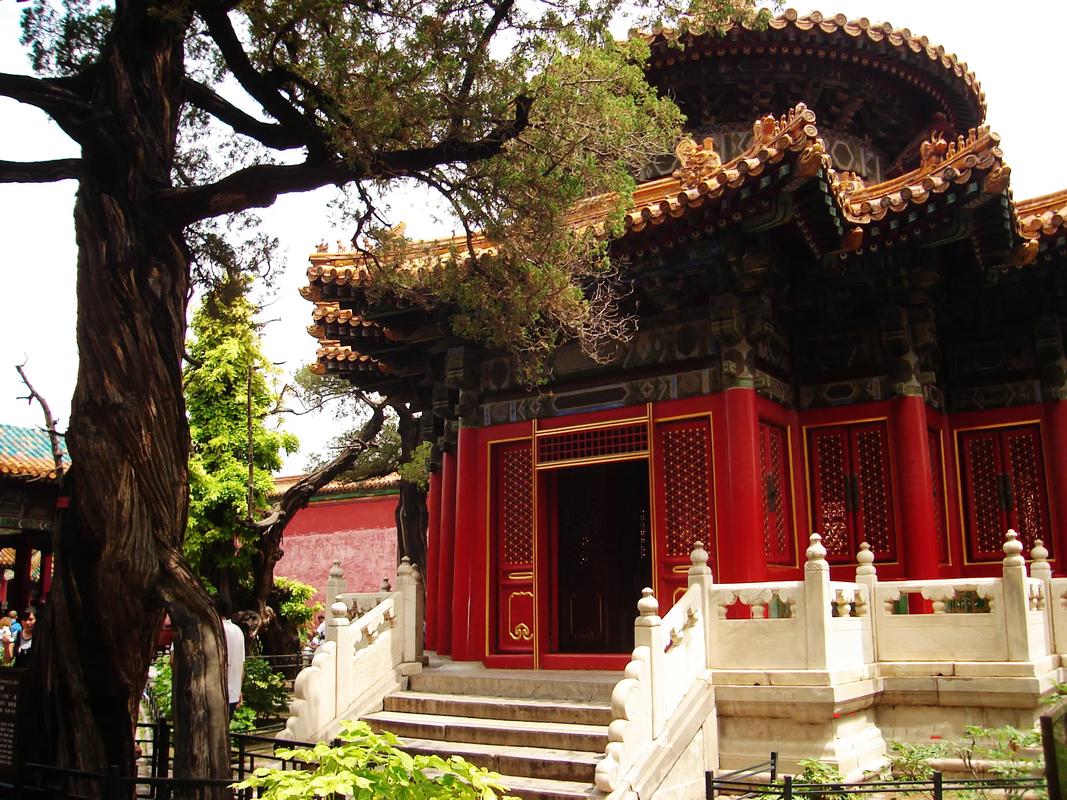
The Imperial Garden of the Forbidden City
Located just outside the Gate of Tranquility (Jing'anmen) lies the Imperial Garden, a verdant sanctuary nestled within the sprawling complex of the Forbidden City. Constructed in 1417 during the Ming dynasty, this rectangular-shaped garden, spanning approximately 12,000 square meters, served as the private garden for the imperial family. It is considered the quintessential example of a Chinese imperial garden, showcasing the epitome of landscape design and architectural mastery.
A Harmonious Blend of Nature and Architecture
What makes the Imperial Garden truly remarkable is the harmonious coexistence of diverse architectural styles within its limited space. More than 20 structures grace the garden, each possessing a unique character, yet seamlessly blending with the surrounding trees, rockeries, flowerbeds, and exquisitely crafted bronze incense burners.
The Hall of Imperial Peace: The Garden's Heart
The most prominent structure within the Imperial Garden is the Hall of Imperial Peace (Qin'an Dian), the only building situated along the central axis. Standing majestically at the garden's heart, it is enclosed by a rectangular wall, further emphasizing its significance. The hall, originally constructed in the 15th century, holds a special place in the garden's narrative.
In front of the hall stands a magnificent 400-year-old pine tree, affectionately nicknamed the "Concubine Pine." Legend has it that the tree symbolizes the harmonious relationship between the emperor and his consorts. Guarding the entrance to the hall are two imposing gilded kirin, mythical creatures believed to ward off evil spirits and protect the sacred space within. Inside the hall, the central figure of worship is the Taoist deity Xuan Wu, the God of Water, revered for his ability to safeguard the Forbidden City from the ever-present threat of fire.
Pavilions Marking the Seasons
At each corner of the Imperial Garden stands a pavilion, each symbolizing one of the four seasons, adding another layer of symbolism to the garden's design. The most renowned of these is the Pavilion of Myriad Springs (Wanchun Ting), located in the eastern corner. Built in 1535 and later restored during the Qing Dynasty, this particular pavilion embodies the spirit of spring. The remaining three pavilions, though less celebrated, represent summer, autumn, and winter, completing the cyclical representation of the year.
A Mountain of Artificial Splendor
The northeastern quadrant of the Imperial Garden is dominated by the 堆秀山 (Dui Xiu Shan), also known as the "Mountain of Accumulated Beauty." This man-made hill, meticulously crafted with winding caves and pathways, culminates in the Imperial View Pavilion (御景亭, Yu Jing Ting) at its peak. This vantage point provided emperors with panoramic views of the garden and surrounding scenery, making it a favored spot, especially during the Double Ninth Festival, a traditional Chinese holiday celebrated on the ninth day of the ninth lunar month.
Intriguing Pathways and Hidden Meanings
As visitors meander through the Imperial Garden, they will encounter a network of pathways paved with colorful pebbles, arranged in intricate patterns. While many of these patterns symbolize good fortune and auspiciousness, a keen observer might stumble upon a peculiar scene: a depiction of a shrew punishing her husband. In a society like feudal China, steeped in patriarchal values and emperor worship, the presence of such an image within the imperial garden raises intriguing questions about its inclusion and possible interpretations.
The Gate of Divine Might: A Majestic Exit
Marking the northern edge of the Imperial Garden stands the Gate of Divine Might (Shenwumen), also known as the "Gate of Divine Military Prowess." This impressive gate serves as the north gate of the Forbidden City, offering a grand exit for those who have fully experienced the wonders of the inner court, including the captivating allure of the Imperial Garden.
FAQs about the Imperial Garden
Q1: What is the significance of the Imperial Garden in the Forbidden City?
A1: The Imperial Garden was the private garden for the imperial family, a place of tranquility and beauty amidst the grandeur of the palace. It embodies traditional Chinese garden design principles, aiming to create a microcosm of nature within an urban setting.
Q2: What are some of the key architectural features found within the Imperial Garden?
A2: The garden boasts numerous structures, with the Hall of Imperial Peace being the most significant. Other notable features include the four corner pavilions representing the seasons, the artificial "Mountain of Accumulated Beauty", and the winding pebble paths.
Q3: What is the symbolism behind the "Concubine Pine" located in front of the Hall of Imperial Peace?
A3: This ancient pine tree, said to be over 400 years old, symbolizes the harmonious relationship between the emperor and his consorts, a reminder of the importance of balance even within the imperial household.